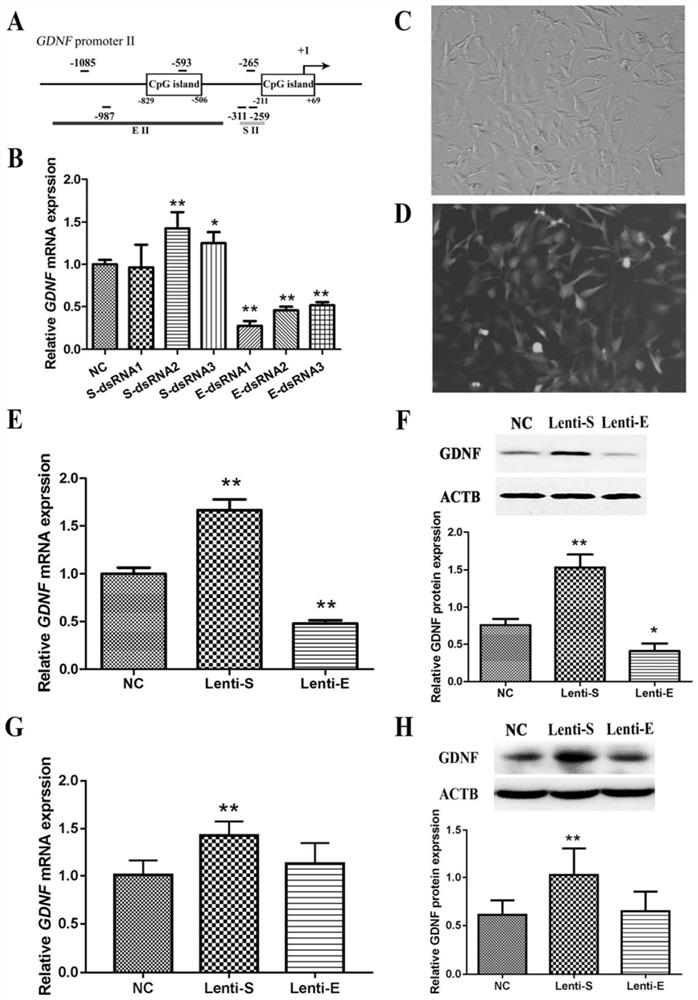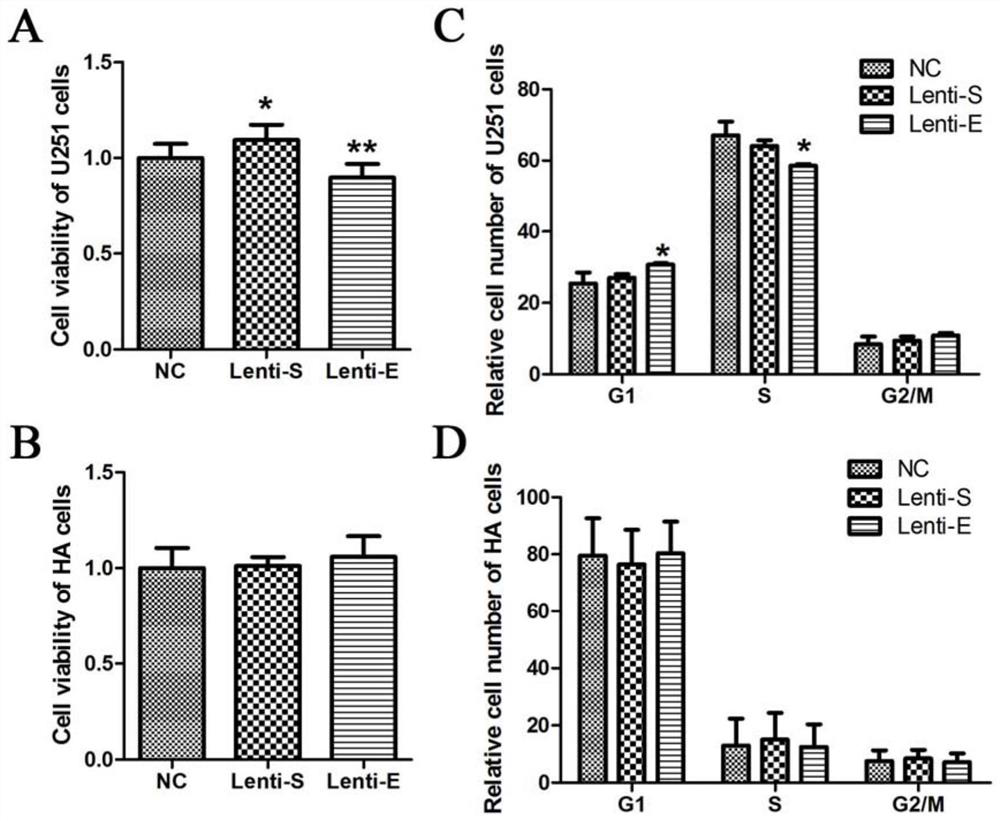A dsRNA targeting enhancer II in the promoter II region of gdnf gene and its application
A promoter and gene technology, applied in dsRNA and its application fields, can solve problems such as ambiguity
- Summary
- Abstract
- Description
- Claims
- Application Information
AI Technical Summary
Problems solved by technology
Method used
Image
Examples
Embodiment 1
[0026] 1.1 Cell culture
[0027] The human U251 astroblastoma cell line was purchased from ATCC cell bank and was identified based on its cell morphology and short tandem repeat sequence. Human primary astrocytes (human astrocytes, HA) were purchased from ScienCell. U251 and HA cells were cultured in modified Eagle's medium containing 10% fetal bovine serum (Gibco, USA) and astrocyte medium containing 2% fetal bovine serum and astrocyte growth supplement factor ( AM, ScienCell), add penicillin 100U / ml, streptomycin 100U / ml, place at 37℃, 5% CO 2 Cultivate in a saturated humidity incubator.
[0028] 1.2 Synthesis and transfection of dsRNA targeting different cis-acting elements in the II region of the GDNF gene promoter
[0029] Design and chemically synthesize 6 21-nucleotide dsRNAs targeting enhancer II or silencer II in the promoter II region of GDNF gene (GenBank accession number: AF053749) and control NC-dsRNA (Table 1). BLAST analysis ruled out the possibility that these dsRN...
Embodiment 2
[0048] 1.1 Cell viability detection
[0049] Divide U251 cells and HA cells into 2×10 3 The cell concentration per ml was seeded in a 96-well plate with 100 μl per well. When the cells grow to 50% confluency, they are infected with Lenti-S, Lenti-E and Lenti-NC lentivirus. After 72 hours of infection, the cells are processed according to the instructions of the CCK8 kit (Dojindo Molecular Technologies) and read by the Biotek microplate reader Absorbance at 450nm.
[0050] 1.2 Cell cycle detection
[0051] Divide U251 cells and HA cells into (5-8)×10 5 The density is inoculated at 25cm 2 Culture flask. After 72 hours of infection with Lenti-S, Lenti-E and Lenti-NC lentivirus, the cells were digested with 0.25% trypsin, washed twice with PBS, fixed in pre-chilled 70% (v / v) ethanol overnight, and in Stain with 100μg / ml propidium iodide (PI) for 1h at 4℃. Flow cytometry (FACScan) was used to detect the DNA content in the cells.
[0052] 2. Results
[0053] In order to clarify the effec...
Embodiment 3
[0055] 1.1 Scratch test
[0056] U251 cells and HA cells in the logarithmic growth phase were infected with lentivirus targeting the GDNF gene promoter II region. After 72 hours, they were seeded in a 12-well plate and continued to be cultured until the confluence was greater than 95%. Use a 10 μl sterile pipette tip to horizontally streak the cells in each well. After rinsing with PBS, they were replaced with fresh serum-free DMEM medium to continue the culture. Micrographs were taken at 0, 24, and 48h after the scratch, and the width of the scratch was measured with Image-Pro Plus 6.0 software.
[0057] 1.2 Transwell detection
[0058] U251 cells and HA cells in the logarithmic growth phase were infected with lentivirus targeting the GDNF gene promoter II region. After 72 hours, they were inoculated in the upper chamber of transwell containing fresh serum-free DMEM medium, and the lower chamber was added with 10% FBS in DMEM medium, after 24h incubation, take out the transwell ch...
PUM
 Login to View More
Login to View More Abstract
Description
Claims
Application Information
 Login to View More
Login to View More - R&D
- Intellectual Property
- Life Sciences
- Materials
- Tech Scout
- Unparalleled Data Quality
- Higher Quality Content
- 60% Fewer Hallucinations
Browse by: Latest US Patents, China's latest patents, Technical Efficacy Thesaurus, Application Domain, Technology Topic, Popular Technical Reports.
© 2025 PatSnap. All rights reserved.Legal|Privacy policy|Modern Slavery Act Transparency Statement|Sitemap|About US| Contact US: help@patsnap.com



